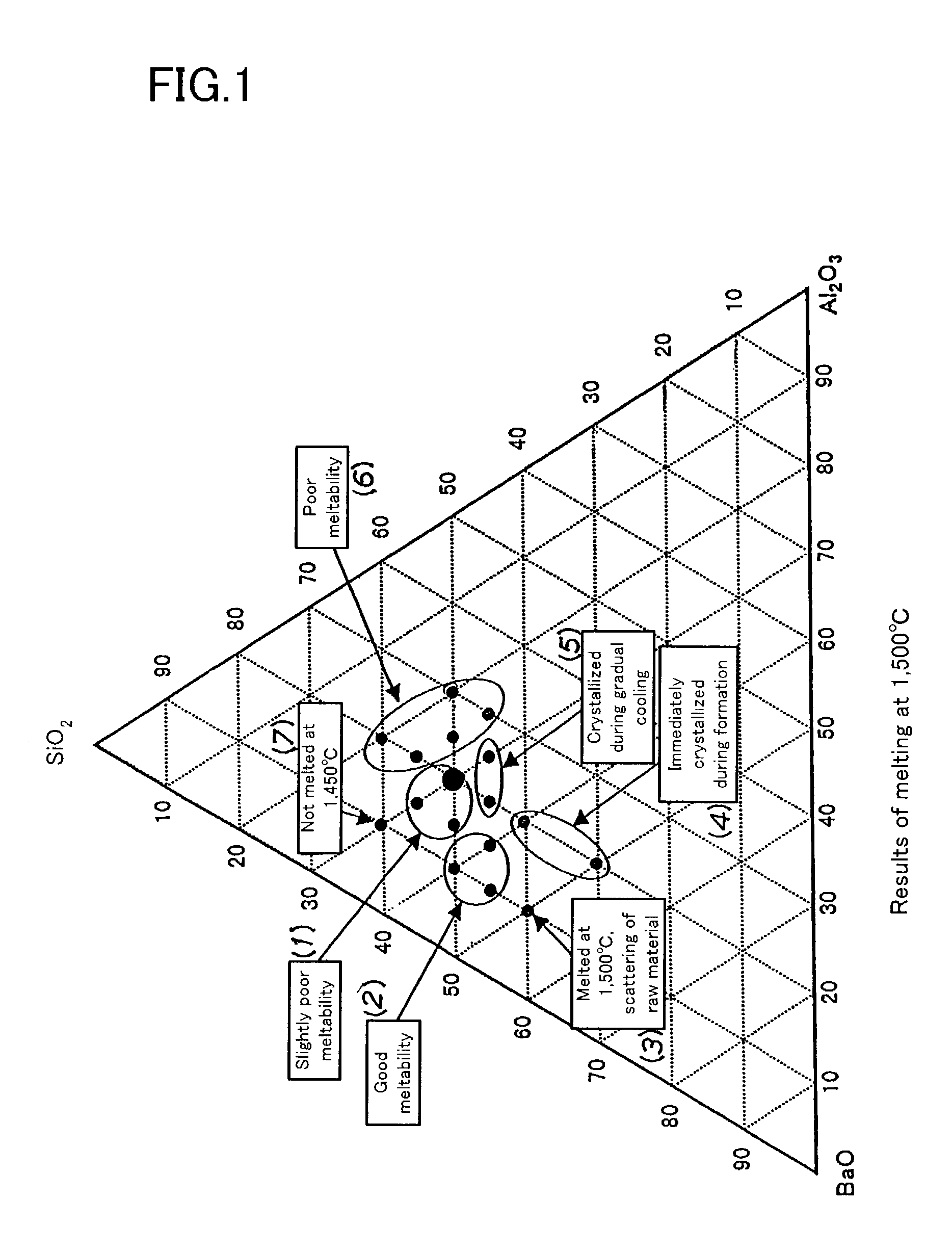Glass-ceramic and reflecting mirror substrate
a technology of glass-ceramic and substrate, which is applied in the direction of layered products, metal layered products, chemical instruments and processes, etc., can solve the problems of shortening the service life of the forming die, the substrate fails to have the desired surface roughness, and the cost of preparing a large number of forming dies to be exchanged, etc., to achieve the effect of reducing the cost of forming die exchang
- Summary
- Abstract
- Description
- Claims
- Application Information
AI Technical Summary
Benefits of technology
Problems solved by technology
Method used
Image
Examples
example
[0097] In the present Example, various glass raw materials containing SiO.sub.2, Al.sub.2O.sub.3, BaO, and TiO.sub.2 as primary components and Li.sub.2O, K.sub.2O, etc. as modification components were prepared. In Tests 1, 2, 3, and 4, glass-ceramics were formed from the glass raw materials; glass properties of the resultant glass products and glass-ceramics were evaluated; and the relation between the amounts of Li.sub.2O and K.sub.2O, crystallization temperature, and the ratio by amount of celsian crystals to hexacelsian crystals were confirmed. Glass-ceramics substantially formed of a celsian crystal phase alone and glass-ceramics substantially formed of a hexacelsian crystal phase alone were selected from the above-formed glass-ceramics; the microstructures of the surfaces (reflection surfaces) of the selected glass-ceramics were observed; and the glass-ceramics were subjected to measurement of mechanical properties and optical properties.
[0098] (Test 1): In Test 1, there were p...
PUM
| Property | Measurement | Unit |
|---|---|---|
| Length | aaaaa | aaaaa |
| Fraction | aaaaa | aaaaa |
| Thickness | aaaaa | aaaaa |
Abstract
Description
Claims
Application Information
 Login to View More
Login to View More - R&D
- Intellectual Property
- Life Sciences
- Materials
- Tech Scout
- Unparalleled Data Quality
- Higher Quality Content
- 60% Fewer Hallucinations
Browse by: Latest US Patents, China's latest patents, Technical Efficacy Thesaurus, Application Domain, Technology Topic, Popular Technical Reports.
© 2025 PatSnap. All rights reserved.Legal|Privacy policy|Modern Slavery Act Transparency Statement|Sitemap|About US| Contact US: help@patsnap.com



